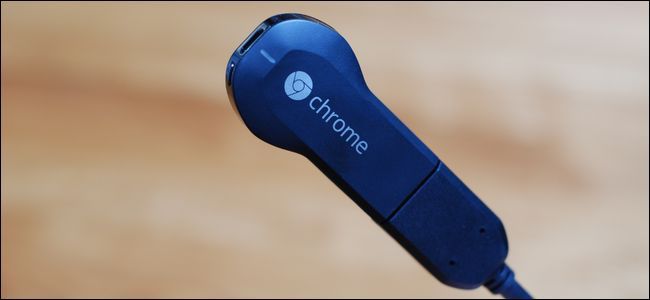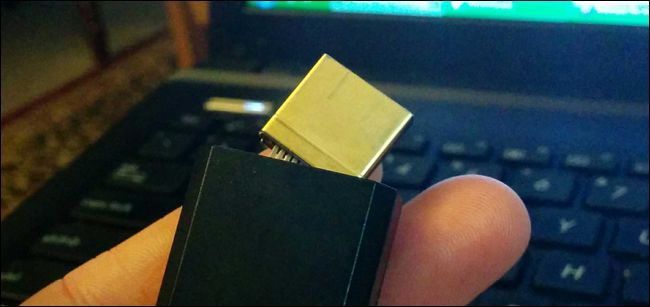Media center "sticks" like the Chromecast are more popular than ever and many of them come with little 3-4" HDMI extension cables. What are the cables for and do you actually need to use them? Read on as we explain why, even if your Chromecast is working fine without it you may want to plug it in anyway.
Dear How-To Geek,
This weekend I was cleaning out my huge cable junk bin in my office and I came across the little HDMI extension cables that came with my Chromecasts. While I was inclined to just pitch them (I mean seriously, when I am I ever going to need to extend and HDMI cable four inches?) I had a nagging feeling that I might be overlooking some very practical reason for using them.
So for real... is there any real reason for these cables outside of horning in the Chromecast when cable spacing is tight? Do I need to install this thing?
Sincerely,
Extender Doubting
We'll admit that when we first unpacked our Chromecast for review around this time last year we kind of chuckled at the tiny little extender. We mentioned in the review insofar as the contents of the package were concerned, but we didn't plug it in at the time, and we didn't give it much of a second thought. A year later, however, and our tune has changed a little bit. The little HDMI extension is actually really handy. Not everyone needs it and you may opt not to install it, but before you toss it in the garbage we'd suggest you consider the following practical reasons for using it.
First, the extension moves the Chromecast away from the body of the television set or receiver it's plugged into. Doing so often improves reception and allows Wi-Fi signals to better read the tiny antenna in the dongle.
Second, HDMI port spacing can be a bit crowded on a lot of television sets as the ports are spaced under the assumption that you're going to plug in individual cables not dongles that are significantly wider than the HDMI port. Further, once it's that crowded enough back there that your Chromecast is wedged in between all the other cables you'll lose a little bit of reception strength (which brings us back to the first point).
Third, if you have a set that gives off a lot of heat it can help keep your Chromecast stable by giving it a little extra breathing room.
Now, that might not be particularly convincing to you. You might say "Huh. That's great, I guess... but it's not very crowded behind my TV and the reception seems fine..." In response to that we present the following photo, courtesy of Reddit user and /r/Chromecast reader, Jennica:
Jennica's cat apparently climbed behind the television set and the weight of the cat pushing down on the Chromecast was enough to damage the HDMI connection. Apparently cat acrobatics doing in the Chromecast aren't exactly rare, either, as several other people chimed in the on Reddit thread to share their own stories of cats breaking Chromecasts.
It seems perfectly reasonable given that the Chromecast would project outward and with it's broad face upward based on the design of most television sets and it would take very little pressure from a cat, a furniture climbing preschooler, or even just an adult mucking around behind the television set to fish wires and hook up new equipment.
The extender itself is, of course, subject to the same risk of physical mishandling, but practically speaking the smaller and sturdier male plug on the adapter will be more resistant to this type of damage. Further, should it actually get damaged, you can buy a replacement extender for around $3-4 off Monoprice or eBay instead of $35 for a new Chromecast.
In light of all that we've since hooked up all our Chromecasts with their extenders on the off chance that one of our cats, kids, or, worse yet, us, might man handle our Chromecast into an early grave. If your Chromecast is happily hidden behind a wall mounted television where you can barely fit your fingers and the reception is fine you might comfortably forgo using the extender (but if not, we strongly recommend using it).
Have a pressing tech question big or small? Shoot us an email at ask@howtogeek.com and we'll do our best to answer it.


